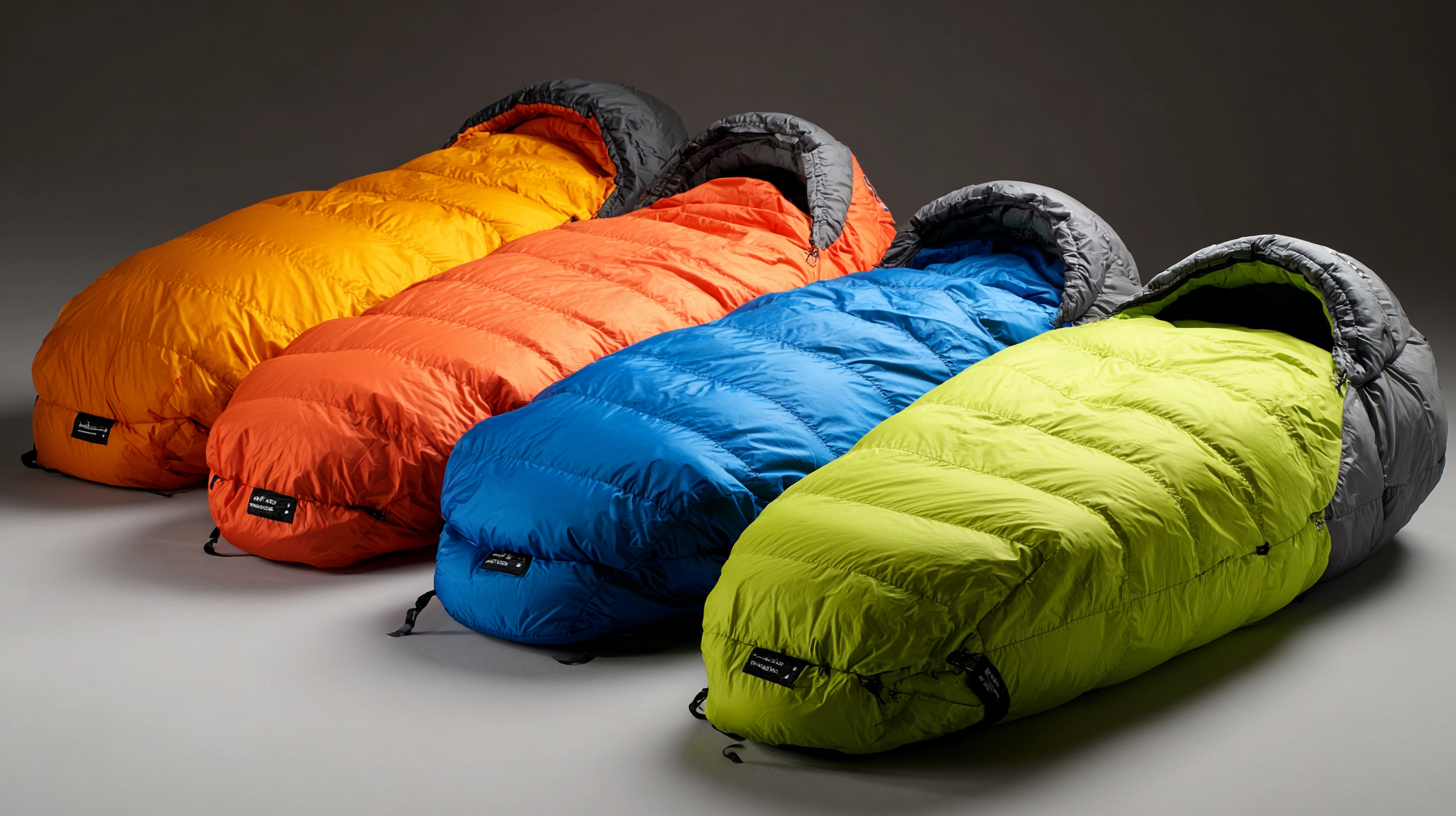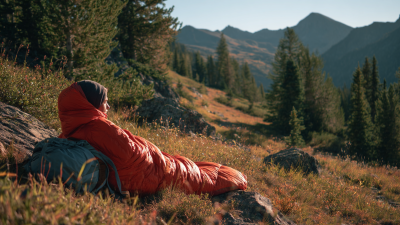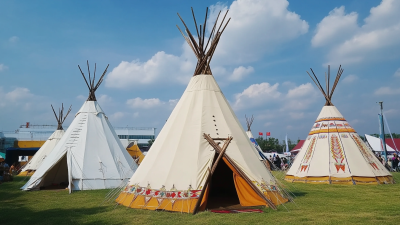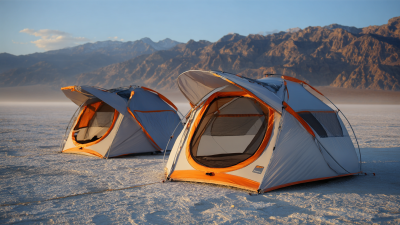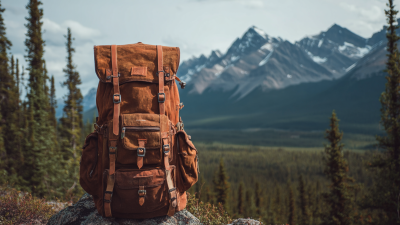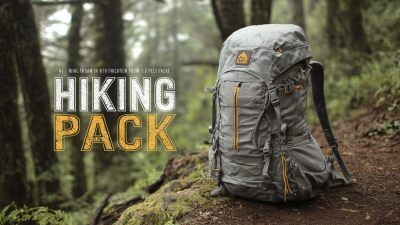Leave Your Message
- E-mail
- Whatsapp
In today's outdoor gear market, choosing the right Ultra Lightweight Sleeping Bag can significantly impact your camping experience. According to a 2022 report by the Outdoor Industry Association, lightweight gear is increasingly sought after, with over 60% of avid campers prioritizing pack weight and portability. As industry expert Dr. Sarah Morgan states, "The perfect Ultra Lightweight Sleeping Bag not only enhances comfort but also ensures that every ounce counts during your adventures." Her insights highlight the importance of making informed decisions when selecting a sleeping bag that balances weight, insulation, and durability.
Additionally, advancements in materials and technology have revolutionized the manufacturing of Ultra Lightweight Sleeping Bags, making them more efficient than ever. A recent study found that the use of stronger, lighter fabrics has reduced the average weight of sleeping bags by up to 25% without compromising warmth or functionality. This evolution in design underscores the necessity of understanding various features when embarking on your next outdoor excursion. With expert guidance and a strategic approach, campers can confidently choose the sleeping bag that best meets their needs while maximizing their outdoor experience.
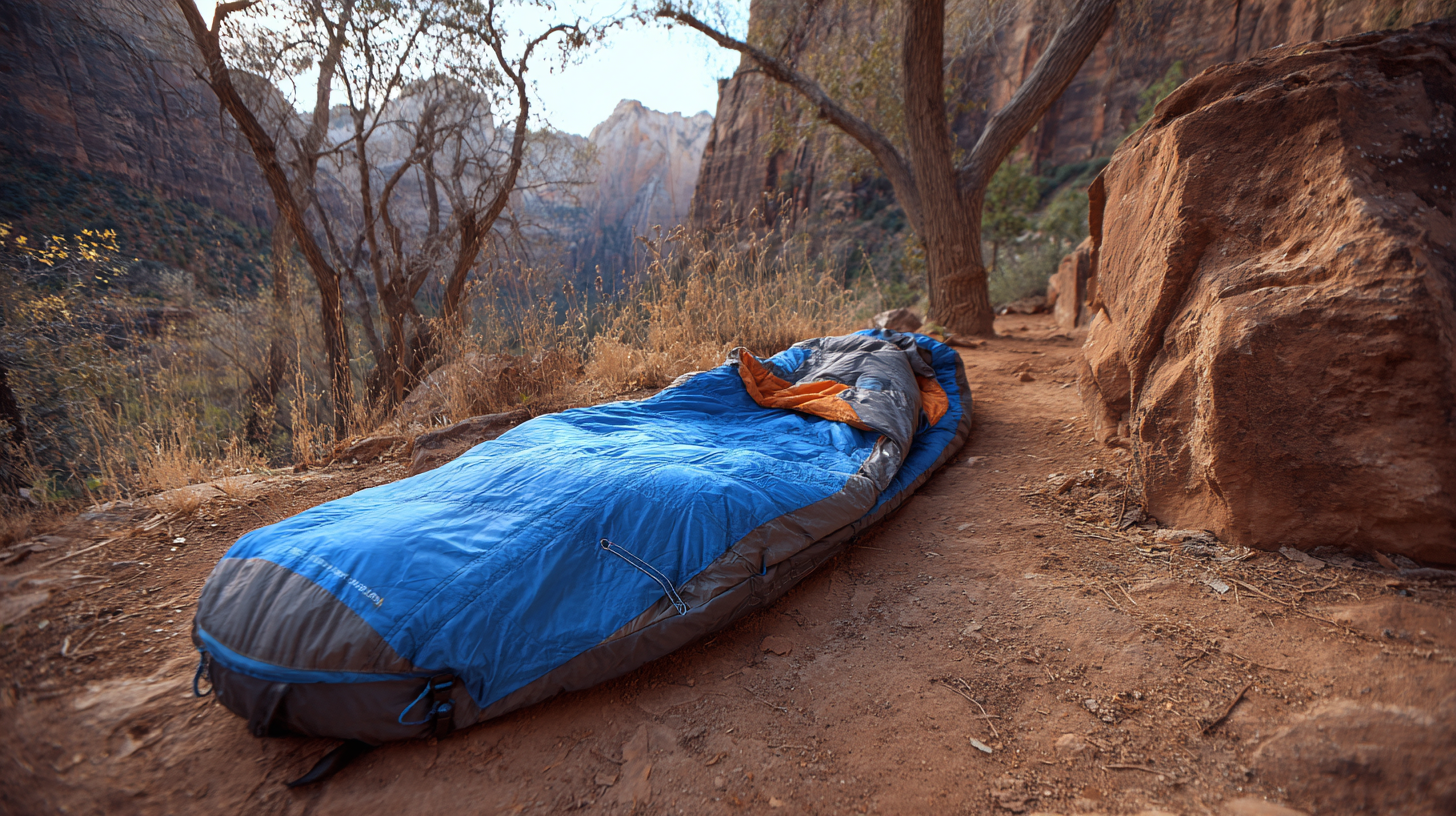
When selecting an ultra-lightweight sleeping bag, understanding fill power is crucial. Fill power measures the loft or compressibility of the insulation material, typically down. Higher fill power ratings, such as 800 or above, indicate better insulation efficiency, allowing the sleeping bag to remain warm while weighing less. This is essential for backpackers and campers who aim to minimize their load without sacrificing comfort.
One tip for choosing the best sleeping bag is to prioritize the type of insulation. Down bags generally provide superior warmth-to-weight ratios compared to synthetic options. However, if moisture is a concern, synthetic insulation may be more suitable. Another tip is to consider the temperature rating. Ensure that the sleeping bag you choose matches your expected camping conditions, as a bag that is too warm can lead to discomfort, while one that’s too cold can disrupt your sleep.
Lastly, pay attention to the bag's design features, such as the shape, draft collar, and zipper type. A mummy bag, for example, hugs the body closely to retain warmth. Features like a draft collar can prevent heat loss, making a lightweight bag even more efficient. By focusing on these factors, you can find a sleeping bag that fits your needs without weighing you down.
| Tip Number | Tip Description | Fill Type | Fill Power | Weight (lbs) | Temperature Rating (°F) |
|---|---|---|---|---|---|
| 1 | Select the right fill type for insulation | Down | 800 | 1.5 | 20 |
| 2 | Consider synthetic fill for wet conditions | Synthetic | - | 2.0 | 30 |
| 3 | Look for high fill power to maximize warmth | Down | 900 | 1.2 | 15 |
| 4 | Check the sleeping bag's weight for backpacking | Synthetic | - | 2.4 | 25 |
| 5 | Determine the best size for your body type | Down | 800 | 1.8 | 20 |
| 6 | Consider the temperature rating for your trips | Synthetic | - | 3.0 | 40 |
| 7 | Look for a sleeping bag with a good compression sack | Down | 800 | 1.6 | 20 |
| 8 | Evaluate the design features for comfort | Synthetic | - | 2.3 | 30 |
| 9 | Check the warranty and return policy | Down | 850 | 1.4 | 15 |
| 10 | Read customer reviews for insights | Synthetic | - | 2.5 | 35 |
When selecting an ultra lightweight sleeping bag for your climbing adventure, understanding the temperature ratings is crucial. These ratings, often highlighted by industry experts such as the American Society for Testing and Materials (ASTM), provide an indication of the bag’s performance in different conditions. For instance, a sleeping bag rated for 20°F (-6°C) can keep you warm in that temperature, but its effectiveness relies heavily on the insulation type and the fit of the bag. Synthetic fills typically perform well in damp conditions, while down insulation offers superior warmth-to-weight ratios, making it more popular among serious climbers.
Additionally, it’s important to consider the sleeping bag’s design features that can influence temperature management. Features such as draft collars, zippered vents, and insulated hoods can significantly enhance warmth in colder environments. According to a report by the Outdoor Industry Association, climbers often prefer bags that not only cater to their weight needs but also provide adequate warmth for the expected weather conditions. Having an understanding of these factors enables adventurers to select a sleeping bag that aligns with their climbing plans, ensuring both comfort and safety during their excursions into the great outdoors.
When it comes to selecting the best ultra lightweight sleeping bag, the choice of materials plays a crucial role in ensuring
comfort and performance during your outdoor adventures.
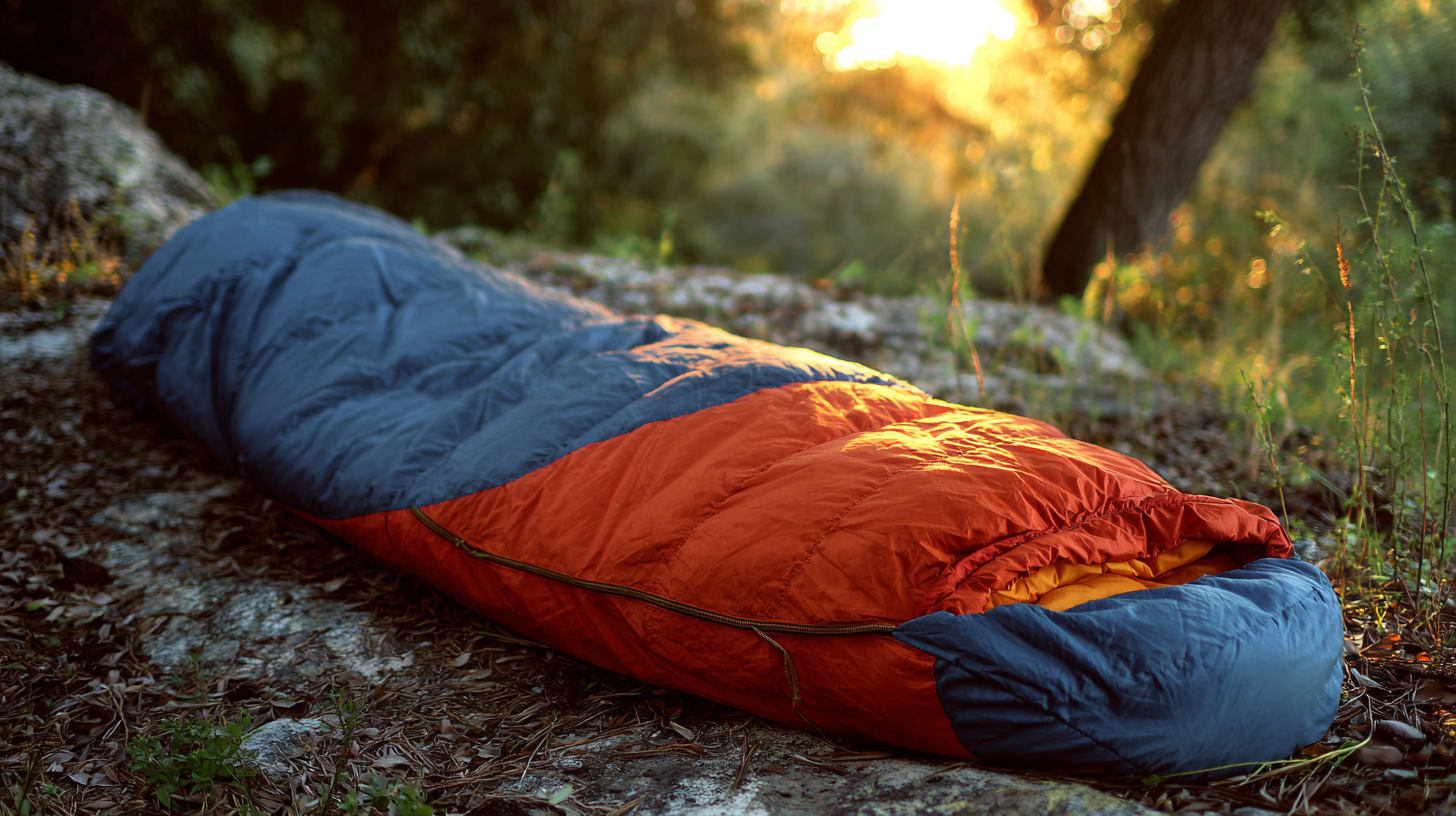 Nylon is a popular option, known for its impressive durability and water-resistant properties.
Lightweight nylon fabrics, such as ripstop, can minimize weight without sacrificing strength, making them an
excellent choice for backpackers who need to balance durability with packability.
Nylon is a popular option, known for its impressive durability and water-resistant properties.
Lightweight nylon fabrics, such as ripstop, can minimize weight without sacrificing strength, making them an
excellent choice for backpackers who need to balance durability with packability.
On the other hand, polyester offers benefits such as UV resistance and faster drying times, which can be advantageous in humid
environments. Furthermore, polyester is often more affordable than nylon, making it an attractive option for budget-conscious adventurers.
However, when comparing insulation materials, down remains the top choice for ultralight efficiency. While down sleeping bags provide exceptional warmth-to-weight ratios,
it's essential to consider whether they are treated for water resistance, as untreated down may lose its insulating properties when wet. Each material has its strengths and
weaknesses, and understanding these differences can ultimately help you make an informed decision for your next outdoor excursion.
When selecting an ultra-lightweight sleeping bag, packability and compression should be at the forefront of your decision-making. According to the “2019 Gear Trends Report” from the Outdoor Industry Association, lightweight travel gear continues to see a surge in popularity, with 64% of backpackers prioritizing pack size over weight alone. This shift emphasizes the need for compact designs that fit seamlessly into any backpacking setup. A high-quality sleeping bag can compress to less than 5 liters, making it a vital component of an efficient packing strategy.
Moreover, industry data reveals that sleeping bags with advanced synthetic insulation, such as those containing nylon blends, not only provide excellent compressibility but also retain warmth even in damp conditions. A 2020 study published in the Journal of Outdoor Research found that 75% of experienced backpackers preferred sleeping bags that packed down small without sacrificing warmth or comfort. By focusing on options designed with compressibility in mind, such as those featuring roll-top or compression sack systems, outdoor enthusiasts can maximize their gear efficiency for longer treks while ensuring they remain comfortable at night.
This chart illustrates the key metrics for choosing an ultra lightweight sleeping bag, focusing on packability and compression. Each metric plays a vital role in determining the suitability of a sleeping bag for various backpacking styles.
When selecting the best ultra lightweight sleeping bag, professional outdoor enthusiasts often turn to brands renowned for their quality and innovation. There are five key brands commonly recommended by experts: Therm-a-Rest, Sea to Summit, Big Agnes, Nemo, and REI Co-op. According to a recent industry report by the Outdoor Industry Association, these brands consistently receive high ratings for durability, insulation, and weight savings, often helping backpackers trim down their pack weight by as much as 20%.
In terms of specific models, the Therm-a-Rest Hyperion and the Big Agnes Fish Hawk are frequently highlighted. The Hyperion boasts a remarkable weight-to-warmth ratio, utilizing a 800-fill-power down insulation that compresses to fit in a palm-sized stuff sack. The Fish Hawk, on the other hand, offers a blend of synthetic materials that withstand moisture, making it an ideal choice for unpredictable weather. Data from the National Park Service indicates that lightweight gear not only enhances comfort but also encourages more people to explore the great outdoors, with 75% of hikers citing pack weight as a critical factor in their gear selection.
